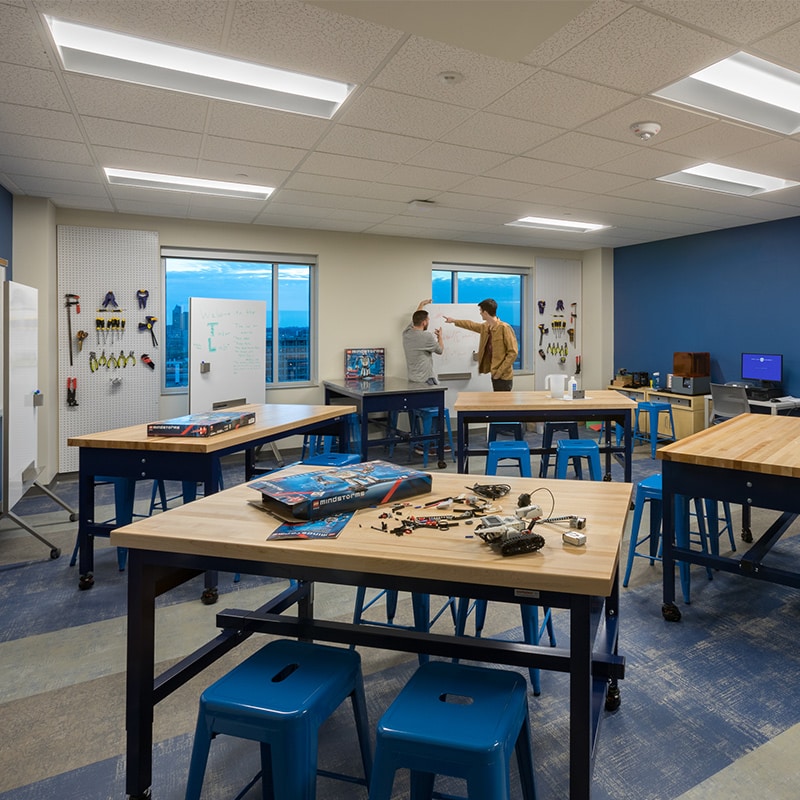Architecture Transforms Learning Communities Into More Than a Catchphrase

Tuesday, November 17, 2020
Over the past decade or so, “learning community” and “high impact experience” have become staples in the vocabulary of many higher education leaders as more and more institutions strive to integrate these practices into their student experience. Learning communities aim to gather specific segments of a campus community, such as first-year students or those in a specific degree program, to participate in a defined set of academic and co-curricular experiences centered around a specific theme or goal. However, these forward-thinking student success strategies have their pitfalls, particularly when the aspiration to create an all-encompassing, high-impact program falls short of its promise.
Learning programs thrive when they revolve around a designated space designed with the group’s goals and intentions in mind. These spaces must be customized to the specific needs of the group, yet remain flexible enough to accommodate growth and adaptation of the program over time. Mindful design encompasses these goals. As designers, we’ve had the opportunity to implement successful learning communities for a variety of clients, making them truly holistic and impactful. The following are just a few examples of how we have created spaces that have a direct impact on student learning and support active learning.
- Spring Hall and Grand Hall at Saint Louis University are designed with first- and second- year students in mind. The learning communities featured in the two residence halls include: Honors, Leadership for Social Change, Diversity and Global Citizenship, Engineering and Innovation, and Ethical Leaders in Business. Each community is housed on a dedicated residential floor and supported by a specialized learning commons, lounges, classrooms, and designated study rooms to facilitate formal and informal programming.
- University Commons at Millikin University showcases the flexibility that can be achieved through a thoughtfully designed space intended for an entire campus. The Commons consolidates organizations previously scattered throughout the campus into a multi-disciplinary facility that supports the University’s educational model of “Performance Learning.” Designated “Agile Teams” comprised of various students across campus utilize the many group collaboration spaces outfitted with flexible furniture and integrates technology to develop and refine projects with faculty support.
- The James Guth Costigan Innovation Lab at St. Louis University High School (SLUH) exhibits the potential for the concept of learning communities to be adopted at secondary education institutions and beyond. The Innovation Lab features an open workshop and flexible classroom space to facilitate collaboration among students interest in STEAM disciplines. Fabrication and robotics labs outfitted with cutting-edge technology help form a cohesive learning community for high school students.
Contact Erik Kocher at [email protected] or (314) 529-4004 to learn more about how our team’s expertise in developing successful active learning communities for higher education and K-12 clients.